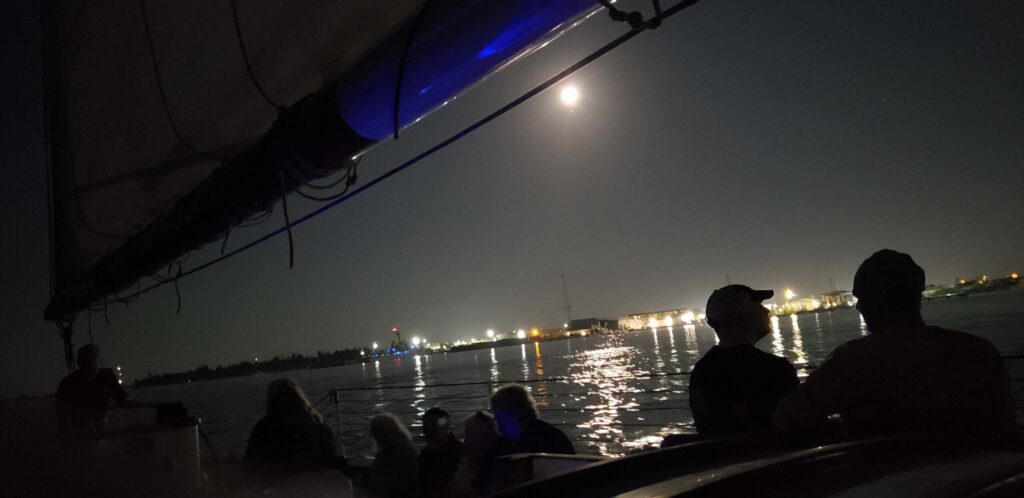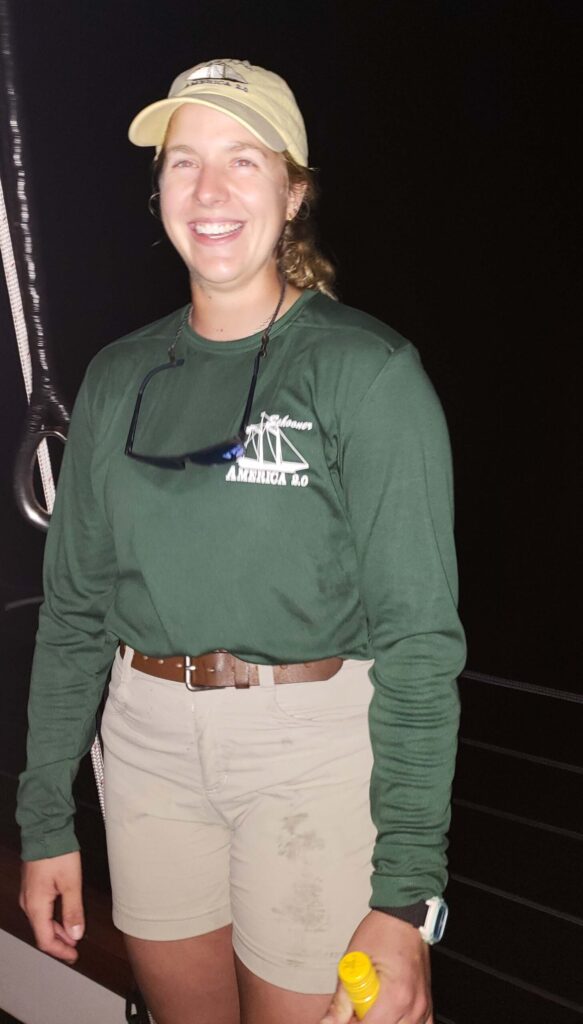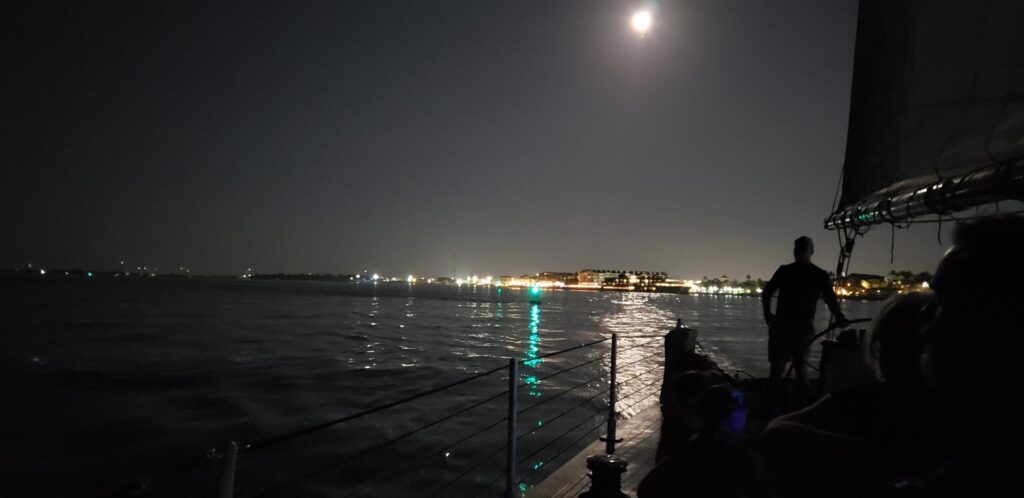By Lucy Komisar
April 24, 2025
I’ve been on a lot of Key West sunset cruises but a moon cruise was a first!
Boats at night are more relaxing, easier on your eyes. Key West is lit up by the moon which brightens everything. A full moon happens once a month.
And if you’re on a cruise with Rae Ann Sleith, of the Classic Harbor Line’s Schooner America 2.0, you can learn about the role of the moon and the stars in sea navigation. The America 2.0, a 105-foot wooden two-masted schooner, is a modern version of a classic maritime icon, the famous racing yacht America, which won the inaugural America’s Cup in 1851.
Rae shifts between being the captain and crew operations manager. She grew up in Pennsylvania, went to Penn State where she majored in psychology and business. She explained the importance of the moon to navigation in the history of Key West.
Sailors used a lot of celestial navigation. Back then, they would have used a sextant to pin celestial bodies for navigation to figure out their exact coordinates on a chart. The moon could be used or the North Star or other constellations or stars. You could use them for navigation as well. That could help them know where on the chart they were and where they shouldn’t go to run aground.
Rae said, “When we do our deliveries offshore, on occasion if we have a really good visibility night — our head delivery captain Rose used to teach classes on that. She’ll sometimes bring out her sextant and teach us how to read the celestial bodies.”
Celestial Navigation
She explained, “Now, it’s not practical when you can see land and you can follow the channel markers, but it is a good way to learn. And, back in the day if they were way offshore, they might have not had all these lights. And they have the moon. If they knew the point of the moon and what time it was, and if they had a few other celestial bodies, they could find out where they were in relation to whatever charts they had.”
Even if the charts weren’t very accurate, because Key West was making a lot of money off of wrecks!
The Wreckers
Key West was once very rich because of the wrecking industry. Back in the day, the charts weren’t very accurate or didn’t have much information. Rae said, “So, boats would come sailing into the Keys and crews would not have local knowledge of where the shallow waters were or where the reef was, seven miles out that way. The San Key Lighthouse marks where the reef is. And a lot of boats would hit the reef or run aground.”
Some people would capitalize on that. They were wreckers. They would sometimes even try to promote shipwrecks.
Rae: “Right now, we’re in Northwest Channel, in about 20 feet of water. On either side of this channel the water gets really shallow fast. If you went over that way towards New York Key, you would run aground.
Mule Key was over there and it was rumored to have mules with lights tied on to them. The mules would walk around. People thought that those were channel markers and they would take their boats to the shallow water over there.”
The sailors who were the wreckers would race to the wreck and claim salvage rights of whatever was on that boat: silk, gold coins, spices. And usually, they would sell it back to the crew because the crew didn’t want to say that they weren’t following the charts accurately or didn’t know what they were doing. Or that they saw some mules walking around. And they’d usually buy it back.
The boats were somewhere in here, south of mainland Florida and north of Cuba, 90 miles from Key West.

I asked, “Are the people running this boat using the same celestial navigation systems?” Rae replied, “We use GPS. A little bit different!”
If you go
Photos by Lucy Komisar




